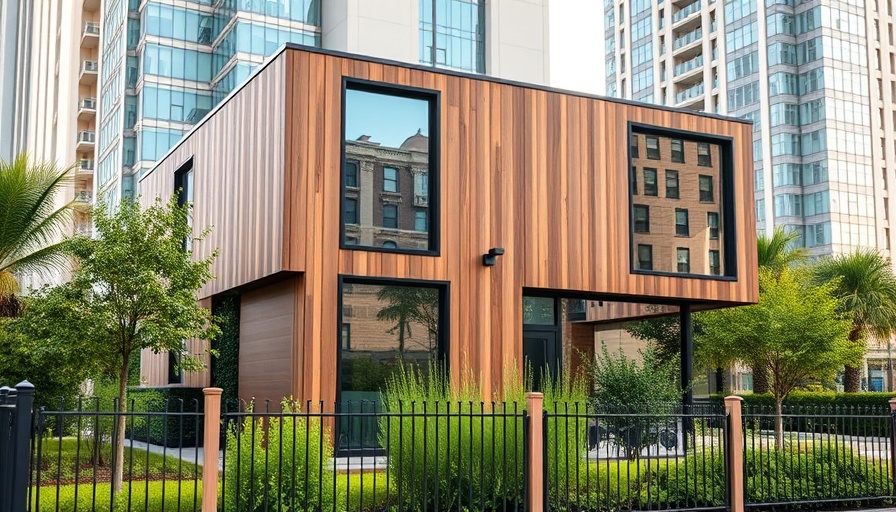
Rethinking Urban Spaces: AMASA Estudio's Pavilion Revival
In a city known for its vibrant culture and unique architectural challenges, AMASA Estudio has breathed new life into a derelict pavilion in Mexico City’s Infonavit housing block. The project, aimed not just at restoring a forgotten structure but also at enhancing community spirit, serves as a remarkable case study in architectural value associated with urban living.
Transforming Spaces Into Functional Work Environments
The newly refurbished pavilion addresses a crucial need for functional community spaces that could double as comfortable remote work environments. In an age where digital nomadism thrives, people are increasingly seeking well-designed workspaces that offer both productivity and comfort. The addition of ergonomic elements in the pavilion's design—such as ample natural light, thoughtful seating arrangements, and quiet nooks—makes it an attractive spot for remote workers and local residents alike.
Bridging Community and Productivity: A Necessary Balance
As more individuals choose remote work, the importance of creating spaces that encourage social interaction while being conducive to productivity cannot be understated. This pavilion serves as a hub for collaboration, reflecting a design philosophy focused on community. It illustrates how architecture can facilitate connections, driving both social interaction and individual productivity while honoring the unique character of its surroundings.
Lessons in Ergonomics: Designing for Comfort and Efficiency
A strong focus on ergonomics is evident in the pavilion’s redevelopment. Ergonomic principles are not just confined to personal workspaces; they extend to communal areas as well. Ensuring that public spaces are equipped with the right seating, surfaces, and ambient conditions can significantly elevate user experience. By prioritizing these elements, AMASA Estudio has set a benchmark in workplace design that can inform local and international approaches to public and remote workspaces.
A Model for Future Architectural Projects
This project presents a compelling argument for the role architecture plays in modern communities particularly as cities evolve to accommodate remote workers, freelancers, and digital nomads. The pavilion not only provides a functional space; it acts as a catalyst for improving lifestyle and fostering productivity in Mexican urban settings. How can other cities learn from this model to create similar environments that support both work and social needs?
Conclusion: The Future of Work Is Community-Centric
As urban areas continue to adapt to the changing landscape of work, the reimagined Infonavit pavilion stands as a testament to the power of thoughtful design. Its success resonates with digital nomads looking for efficient, comfortable, and community-focused workspaces. In this era of remote work, ensuring community spaces meet the needs of their users—by promoting productivity and well-being—has never been more crucial.
If you’re exploring ways to enhance your remote workspace, consider the principles exhibited in this pavilion: prioritize comfort, foster social connections, and always think about ergonomics. These are the keys to creating productive and enjoyable work environments, whether at home or in shared spaces.
 Add Row
Add Row  Add
Add 




Write A Comment